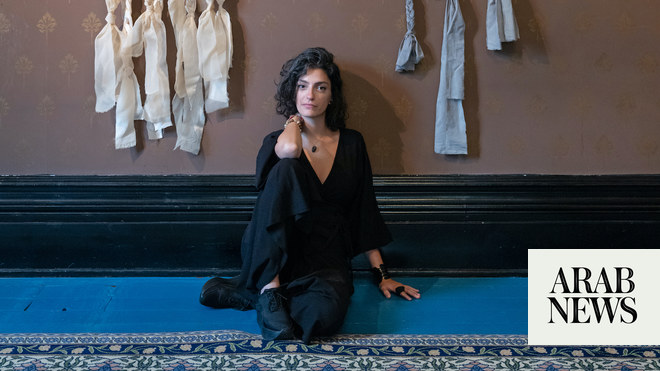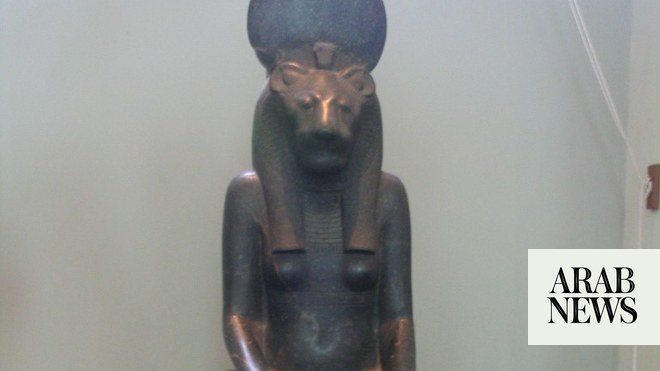
DUBAI: A new three-piece exhibit, “Kheit” (Arabic for thread), is underway at the Leighton House Museum in London — the former redbrick house and atelier of the late Victorian artist Frederic, Lord Leighton and home to an exquisite Arab Hall, studded with tiles from Syria, Turkey and elsewhere.
For the latest updates, follow us on Instagram @arabnews.lifestyle
The trio of textile artworks were created by the British-Lebanese artist Nour Hage and will be on show until July 16. Hage was approached by the Arab British Centre last year to work on this commission for the museum.
At the time, the museum was closed for renovation, and Hage was given rare solo access to the venue. “My favorite bit of it is that I got to spend hours and hours in Leighton House when it was really empty,” she tells Arab News. “It’s quite an intriguing interior. You are completely transported to a different place and era. It was an amazing experience.”
Hage was inspired by the tiles of the Arab Hall and staircase halls of Leighton House. Some are decorated with floral and figurative details, while others feature Quranic writings. “All of them are about God protecting this house,” says Hage.
She sourced sumac berries from Jezzine for “Her Rays,” for example, which is colored in light browns. Meanwhile, “Sukun” comes in grey-purple tones, generated through soaking the fabrics in an iron bath of rusty nails. “Our Garden,” the third piece in the exhibition, was hand-stitched by eight people from the neighborhoods around Leighton House.
Working with textiles holds a special meaning for Hage, who has a background in fashion design. “There’s something really emotional about textiles,” she explains. “They’re part of our daily lives. We dress ourselves in textiles, we cover ourselves in blankets. There’s a certain softness to them. . . They have an extra fragility and I’m drawn to that.”












